The following was originally posted on Dee Hogan’s blog The Josei Next Door and has been republished with permission.
This season defied all kinds of initial expectations, for better and for worse.
I can’t help but chuckle when I go back and read my premiere reviews for this season, because man, a lot can change in three months. While it’s true that some series remained remarkably consistent from start to finish (Nozaki-kun, Space Dandy, Ao Haru Ride), others came out of left field to leap into my Top Five (Book of Circus, Nobunaga Concerto) while still others started as jaw-dropping near-masterpieces only to bumble toward the finish line (lookin’ at you, Terror in Resonance).
I listed three shows as potential “gold nuggets” at the beginning of the series, and if you’d told me that I was going to go one-in-three and that “one” would be Nozaki-kun, I would’ve had to put on my skepticals.
Just goes to show that a fantastic start does not a great series make, I suppose. Still, despite a few disappointments, there were enough pleasant surprises and strong sequels/continuations to make this a solid, B-grade season. As I mentioned in my Midseason Review, summer was also delightfully eclectic, featuring good shows across multiple genres (comedy, horror, slice-of-life, fantasy, sports, etc.), making it easy for just about anyone to find something to enjoy. They tell me that up until a couple years ago, Summers were historically the worst of the anime seasons. Nice to see that that’s no longer the case.
On a more personal note, Summer 2014 also marks the first anime season I blogged from start to finish, watching the premiere of every (licensed) new series and finishing far more shows than I usually would. I still can’t quite believe that I managed to keep up with 16 (!!) shows at once (17 if you count Viz’s Sailor Moon re-release), including my slightly insane 50-episodes-in-30-days Hunter x Hunter marathon finish. I
suspect I’ll be a little pickier with the Fall season (the return of both Sports I Care About and my American shows means I have less anime time overall), but this Summer has been a great learning experience, and every Like, Reblog, and Follow [Editor’s Note: Do yourself a favor and follow The Josei Next Door, because the #outofcontextanime tag is gold] encouraged me to keep it up and keep working to improve. So thanks to all of you, and I hope to hear from you again as the Summer season winds down and the Fall season revs up!
Rankings
But before we start panning the stream for new series, I wanted to pop in one last time for a spoiler-free post about the summer that was. I’ve ranked the series I finished and put together some basic info and quickie reviews in hopes that one of these darlings will spark your interest. So let’s take a look back up the stream, starting with…
1. Gekkan Shoujo Nozaki-kun (Monthly Girls’ Nozaki-kun)
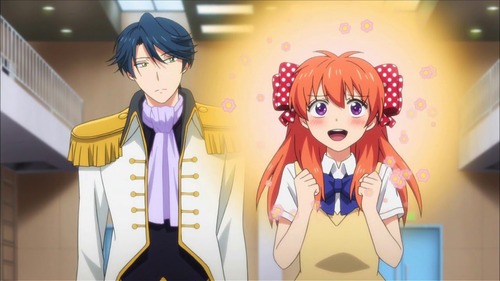 Available On: Crunchyroll (Note: I’ll try to specify regional availability when I can, but with CR you kind of just have to go to the page to see if the show works in your region. I know everything is available in the US, at least.)
Available On: Crunchyroll (Note: I’ll try to specify regional availability when I can, but with CR you kind of just have to go to the page to see if the show works in your region. I know everything is available in the US, at least.)
Episode Count: 12
In a Sentence: After a love confession gone awry, Sakura Chiyo ends up working as an assistant on the popular shoujo manga Let’s Fall in Love—which just so happens to be written by her crush, Nozaki Umetarou.
What, you were expecting something else?
Funny, progressive, approachable, charming, and cleverly subversive, Nozaki-kun was consistently wonderful and wonderfully brilliant. It treated its characters with love and respect even as we laughed with them (not at them, as one commenter pointed out), acknowledging their quirks and unique lifestyles without judging them for it.
I’ve seen some people writing this off as “just a cute comedy,” but it’s so much more than that, and I’ve got a Nice Long Essay to prove it. To echo fellow blogger Enzo, this is an important series, both in terms of what it does to challenge gender norms in fiction and in the fact that it’s gained a respectable following both in Japan and overseas. Here’s hoping that following will be large enough for other companies to produce more shows in this vein, and for Dogakobo to make a Season 2 some time in the future.
You can read my Series Review (and my Nice Long Essay) for more.
Series Grade: A
2. Kuroshitsuji (Black Butler): Book of Circus
Available On: Funimation (US/Canada), Crunchyroll (other regions)
Episode Count: 10
In a Sentence: At the orders of Queen Victoria, Earl Ciel Phantomhive and his demonic butler Sebastian infiltrate the traveling Noah’s Ark Circus to investigate a string of recent missing children’s cases.
Content Warning: Graphic violence (against both adults and children); brief sexual content
Note: This is a continuation of the Black Butler story as told in the original manga. It ignores all anime-original material. If you’re interested in watching BB, I recommend watching the first 15 episodes of Season 1 (available on Funimation and Netflix) and then skipping straight to Book of Circus. The manga is also available via Yen Press, if that’s more your style.
Black Butler has always been good at making me giggle and feel uncomfortable in equal turns, but this was the first time I found the series utterly riveting, an excellent blend of well-paced, intricate plotting, complicated and sympathetic characters, and a whimsical/creepy setting that felt like it had been yanked straight from a Neil Gaiman novel.
It all built to an unsettling and heartbreaking conclusion, reminding us that, despite its forays into silliness, Black Butler is a story about antiheroes existing in a world that offers much in the way of darkness but little in the way of redemption. That the series managed to find some tenderness and poignancy in its final scene is a testament to both the source material and the anime staff, who drew me into a world that horrified me but nevertheless left me wanting to see more. I’d been on the Black Butler fence for a while, but no more. Consider me a fan.
You can read my Series Review for more.
Season Grade: A-
3. Hunter x Hunter
Available On: Crunchyroll (entire series), Netflix (first 100 episodes)
Episode Count: 148
In a Sentence: 11-year-old Gon Freecss leaves home to become a Hunter like his absent father before him, and if you think I can summarize 148 episodes in a sentence, you got another thing comin’, bub.
Content Warning: Violence (occasionally graphic; against both adults and children); mild fanservice (both genders/sexes)
It didn’t seem fair to grade the entire run of HxH against the entirety of these other (much shorter) shows, so consider this the ranking for the final arc (the last 13 or so episodes). There were a few too many convenient plot devices and some emotional moments that didn’t feel quite earned in this last arc, and in terms of both ambition and execution I felt it fell just a hair short of my #1-2 rankings.
That said, there were still some wonderful moments of tension, humor, and heart (pretty much every scene with Leorio was worthy of an A+), great animation, and classic Togashi plot twists that thwarted all my expectations. While the penultimate episode was a tad disappointing, the final episode itself was just about perfect, immensely satisfying and full Dem Feels. I’ll grade the entirety of HxH in my end-of-the-year retrospective. Expect it to be ranked even higher than this.
You can read my Series Review for more.
Final Arc Grade: A-
4. Space Dandy 2
Available On: Funimation (U.S./Canada), Cartoon Network
Episode Count: 13
In a Sentence: Bumbling alien hunter Dandy, robot Q.T., and catlike Meow travel the universe(s) discovering new planets and life forms.
Content Warning: Violence (fairly cartoonish and all against adults); the female fanservice is pretty tongue-in-cheek, but it can get annoyingly excessive at times.
I considered giving this one an A-, but some irritating T&A along with a rushed (albeit dynamically animated and entertaining as hell) final episode made me change my mind, so I’m letting it join the very large group of B+ summer series. I’m not sure if this season of SD was, as a whole, stronger than the first, but it didn’t feature the weakest episode of the series (the premiere) and it definitely featured the best episode of the series—and possibly the best episode of any show this year—in the sublime, haunting, and gorgeously scored “A World with No Sadness, Baby.”
Taken as a whole, Space Dandy was an often clever and occasionally stunning experiment in creative freedom and artistic exploration, with some of the best (and most stylized) animation and music of the year. Each week featured a different story loosely connected to the ones that came before it, using the concept of parallel universes to allow the show’s parade of guest directors and writers to have more or less total freedom on the worlds and ideas they wished to explore. Perhaps even more impressive was the way the series slowly developed a canon and built to a true finale, tying up loose ends and wrapping up the series’ major mysteries. It wasn’t always excellent, but it was always interesting, and I was always glad to have it around.
Season Grade: B+
5. Nobunaga Concerto
Available On: Crunchyroll
Episode Count: 10
In a Sentence: Teenage slacker Saburo gets sent back in time to the Sengoku (Warring States) period, where he meets a young Oda Nobunaga—and discovers that the two bear a striking resemblance to one another.
Content Warning: Violence (against adults)
Nobunaga Concerto made up for its awkward CG animation and whiplash pacing with a solid premise, a charismatic MC (and a stellar performance from his voice actor, Miyano Mamoru), and a dedication to telling both the private and public sides of history. The story stops in medias res and it’s highly unlikely we’ll ever see a Season 2, but I’m glad we got as much as we did, and I’m eagerly hoping for a translation of the ongoing manga.
You can read my Series Review for more.
Series Grade: B+
6. Haikyuu!!
Available On: Crunchyroll
Episode Count: 25
In a Sentence: Undersized spiker Hinata Shoyo joins the Karasuno High School volleyball team, where he and a group of lovable dorks must learn to work together in order to return their school’s team to its former glory.
Energetic and straightforward to a fault, Haikyuu!! is chock-full of humor, heart, and goofball characters you’ll want to spend time with and root for. While it struggles to maintain tension during its middle arc, the Inter-High tournament is one of the most entertaining string of episodes of any show this season and a fine example of great sports storytelling. The animation is also some of the best in the business, capturing the intensity, power, and grace of volleyball almost as well as a real-life match. While there’s been no official Season 2 announcement, the popularity of the show all but guarantees we’ll be seeing one before long. If/when that happens, there’s no question I’ll be back for more.
You can read my Series Review for more.
Series Grade: B+
7. Baby Steps
Episode Count: 25
In a Sentence: After a chance meeting with classmate Takasaki “Natchan” Natsu, top student and skilled note-taker Maruo “Ei-chan” Eiichiro finds himself drawn into the world of competitive tennis.
This is a realistic sports series that focuses as much on grind-it-out training and psychology as much as it does the matches themselves. Ei-chan is a meticulous workhorse, smart and talented but by no means a prodigy, making him a character both sympathetic and likable. Baby Steps also features a terrific supporting character in Natchan, a skilled tennis player in her own right and a well-developed female character in a genre that can sometimes seem sadly bereft of them.
While the pacing can drag at times, I’d argue that seeing all the work Ei-chan puts into his game makes his victories all the more rewarding (and his losses all the more disheartening). And with the pleasant surprise of a Season 2 on the horizon, I suspect the series is only going to get better as Ei-chan grows ever closer to achieving his goals.
You can read my Season Review for more.
Season Grade: B+
8. Ao Haru Ride (Blue Spring Ride)
Available On: Crunchyroll
Episode Count: 12
In a Sentence: When first-year high school student Yoshioka Futaba is reunited with her seventh grade crush, she must come to terms with how much he’s changed in three years—and how much she has, too.
Content Warning: Not sure how to explain this without spoiling anything, but there’s one short, uncomfortable “you have to be careful because you’re a girl” scene that really pissed me off; implied teacher/student romance
My opinions about Ao Haru haven’t changed much since my Midseason Review. It continued to be a consistently good YA school story that treated its characters with compassion and respect while (mostly) avoiding the melodramatic pitfalls so common in this genre (the way it handled its love triangle was particularly refreshing, I thought, although I could’ve done without the implied teacher/student romance). Production I.G. produces typically lovely animation, with the watercolor flashbacks serving as the artistic highlight of the series. There’s nothing all that unique or ambitious about Ao Haru, but if you’re looking for a character-driven high school tale, you could do far worse than this one.
Series Grade: B
Available On: Crunchyroll
Episode Count: 12
In a Sentence: Fifteen years after a brutal battle between Earth and the Vers Empire that left the moon in ruins, tensions build and finally explode after a Vers Princess arrives on Earth.
Content Warning: Violence (against adults/teens); brief nudity (nonsexual); mild female fanservice
The first season of A/Z proved itself to be a popcorn flick but a bit of a soulless one, entertaining without being engaging, and guilty of some truly eye-rolling character behavior and plot twists in its later episodes. Even so, high production values, a few characters with flashes of genuine depth, and a strong central conflict mean I’ll be back to see if Season 2 can bring all these fraying threads together and weave a story that is not only worth watching, but genuinely memorable. There’s still enough of a foundation here that A/Z could stabilize its wobbly plot, flesh out its semi-flat characters, and become something worthy of true rather than faint praise. But it ain’t there just yet.
You can read my Season Review for more.
Season Grade: B-
10. Barakamon
Available On: Funimation (US/Canada), Crunchyroll (other regions)
Episode Count: 12
In a Sentence: After calligraphy artist Handa Seishuu overreacts to a bad review, he is sent on a retreat to the rural Goto Island, where he meets a mess of colorful characters and works to discover his own unique artistic style.
An amusing “fish out of water” comedy about a struggling young calligraphy artist and the country kids he befriends. Pretty much every episode elicited at least one good chuckle out of me, and there was really nothing in the show to dislike—the characters were fun, the production values high, and the series benefited from genuinely adorable (rather than irritating) performances from its child voice actors.
And yet… I never really looked forward to new episodes, and I found myself remembering very little of what had happened the week prior. I think the story was just a little too sweet and formulaic, interested in cute kids and life lessons but rarely willing to go anywhere difficult enough to earn its emotional peaks and valleys. What resulted was a perfectly pleasant but ultimately forgettable experience. I wanted to love Barakamon. I really did. But all I could ever do was just kinda like it.
Series Grade: B-
Available On: Funimation (U.S./Canada)
Episode Count: 12
In a Sentence: College student Kaneki Ken finds himself dragged into the frightening world of ghouls—powerful humanoid creatures who feast on human flesh.
Content Warning: Graphic violence (against adults and children)
This one was On Notice during my Midseason Review thanks to some absurd story arcs and a lot of over-the-top (censored) violence and mustache-twirling villains, but the series righted itself in the second half and built to a finale that was tense, tragic, gruesome, and (for the first time) legitimately horrifying. The show was at its best when it focused on its core cast and their struggles to maintain their humanity, and although it was about as subtle as a kick in the teeth, it explored a lot of worthwhile themes of vengeance, prejudice, and the fine line between “human” and “monster.” Tokyo Ghoul‘s first season ended up being a worthwhile (albeit bumpy) ride, and if the show can maintain its momentum and focus on character development, the likely (although currently unofficial) Season 2 has the potential to be pretty great.
You can read my Season Review for more.
Season Grade: B-
12. Glasslip Available On: Crunchyroll
Episode Count: 13
In a Sentence: Third-year student (and part-time glassblower) Fukami Touko and her four longtime friends have their day-to-day routine disrupted when Okikura Kakeru moves into town.
I’m already bracing myself for the hate I’m going to get for ranking this series above some of these other shows. It’s a bit of a mystery to me as well, to tell you the truth. I went two weeks without watching Glasslip, frustrated by the slow pacing and apparent aimlessness of the story. When I came back to it, I entered it with the understanding that I wasn’t watching a story: I was watching a bunch of teens on summer break as they struggled to understand both one another and themselves as they stood on the cusp of adulthood. If a story is “life with all the boring bits cut out,” then Glasslip wasn’t a story. It was just life. Life with a splash of magical realism, sure, but life all the same.
Once I accepted that, in this weird way, I actually really enjoyed Glasslip. Sure, it crawled at a snail’s pace, was willfully vague, and withheld information for far longer than was necessary. But in true P.A. Works fashion it lovingly captured a sense of place (both in space and in time), and its ultimate meditation—on how we see the future, and on how we strive to truly understand other people—struck me as quietly beautiful. Even when it drove me crazy (and it did, often), Glasslip was unapologetically itself, start to finish. I suppose I appreciated that.
Series Grade: C+
13. Zankyou no Terror (Terror in Resonance)
Available On: Funimation (U.S./Canada)
Episode Count: 11
In a Sentence: Two masked boys calling themselves Sphinx begin planting bombs around Tokyo and leaving online videos about the bombs’ locations, leaving it up to former detective Shibazaki to both solve the riddles and discover Sphinx’s ultimate goals.
Content Warning: Violence (against both adults and children); acts of terrorism
If intention were the same as execution, ZanTero would have easily cleared my Top Three. At its heart this is a scathing rejection of the current remilitarization movement in Japan, and the series utilizes multiple characters and viewpoints to show how public policy can resonate (see what I did there?) across generations. The first four episodes were the best of any show this season—and yes, I’m including Nozaki-kun in that statement.
But intention is not the same as execution, and instead of focusing on its central themes and characters, the show devolved into a series of increasingly ridiculous bomb plots; turned its cast into clichéd plot devices instead of exploring their compelling psychology and personal history; and overshadowed the much more interesting domestic threat with a bland “US military bad guy” presence (and while I’m not saying we don’t deserve it, the presentation is so one-dimensional and simplistic that it comes across as lazy writing rather than a pointed critique).
There are still some great moments in the latter half—pretty much everything with the detectives, and I did quite like the Ferris Wheel scene, for all that the show sort of whiffed on Lisa’s character development—but taken as a whole ZanTero just doesn’t come together to tell the story it wanted to tell. It was by no means the worst show of the season, but it was definitely the most disappointing.
Series Grade: C+
14. Love Stage!!
Available On: Crunchyroll
Episode Count: 10
In a Sentence: Ten years after acting in his first and only commercial, camera-shy Sena Izumi finds himself unwillingly reintroduced to the world of show business—and to his old costar, Ichijou Ryouma.
Content Warning: Sexual assault (male); nudity (male); sexual content (male)
Love Stage was the little girl with the curl in the middle of her forehead.When it was good it was very good, but when it was bad, oh boy, was it horrid. At its best LS was very funny and even sweet, a shounen-ai (male-male romance) with a lot of humor and a fair amount of charm. At its worst, it was a nightmare of problematic elements, up to and including an attempted rape scene written like a farce that was so uncomfortably, tastelessly bad I would have dropped the show on the spot if the scene in question hadn’t happened in the last episode.
There were parts of LS I really loved, but in hindsight, it left more of a sour than sweet taste in my mouth. Which is a shame, because I do think there was a cute rom-com at the heart of this series. It was just weighed down by the same problematic tropes that plague so many anime/manga romances.
Series Grade: C
15. Tokyo ESP
Available On: Funimation (U.S./Canada)
Episode Count: 12
In a Sentence: In a world where people with supernatural abilities are feared and hated, two factions of “espers” appear: one to subjugate humanity, and the other to save it.
Content Warning: Violence (against adults/teens); fanservice (mostly female); some unpleasant “dirty old man” humor
Tokyo ESP is a lot of fun when it’s just having fun. It’s a pretty blatant ripoff/homage (your choice) of X-Men, and when it’s reveling in its own silliness—Ghostbuster cameos, possessed penguins, a girl whose power basically turns her into Bruce Lee—I enjoyed it a lot more than I should have. The series lost a lot of momentum in its second half, though, largely because it separated its two lead characters (whose relationship of mutual trust, protection, and inspiration proved to be one of the better love stories of the season), but also because it tried to take itself seriously. The problem with clichés is that its hard to get invested in them, and a serious Tokyo ESP turned out to be a fairly dull show. The “ending” is a rushed mess, too. I actually did enjoy this one, but I’d be hard-pressed to recommend it to anyone.
Series Grade: C-
Unranked
Sailor Moon Crystal
I can’t decide if I’m avoiding ranking this show because of its weird release schedule (seven episodes really isn’t enough for a proper “season” review), or because I don’t want people to yell at me. I’m watching SM Crystal because I really, really want it to succeed commercially, but if I’m being honest I’m not all that into it. The production values are fairly low and the pacing is so fast that it’s hard to get attached to the characters (I mean, I am attached to them because I’m also watching ‘90s Sailor Moon, but still). But again, I’m only seven episodes in, so we’ll see how I feel once we reach the midway point.
Dee (@JoseiNextDoor) is a writer, a translator, a book worm, and a basketball fan. She has bachelor’s degrees in English and East Asian studies and a master’s degree in Creative Writing. To pay the bills, she works as a technical writer. To not pay the bills, she writes young adult novels, watches far too much anime, and cheers very loudly for the Kansas Jayhawks. You can find her at The Josei Next Door, a friendly neighborhood anime blog for long-time fans and newbies alike.
Are you following The Mary Sue on Twitter, Facebook, Tumblr, Pinterest, & Google +?




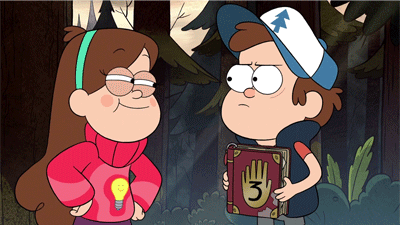
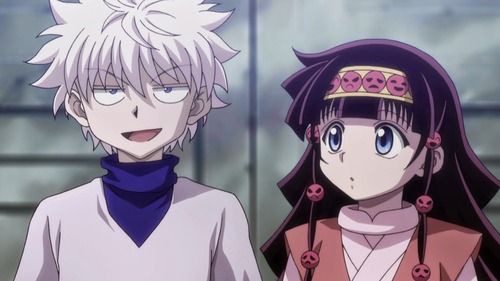
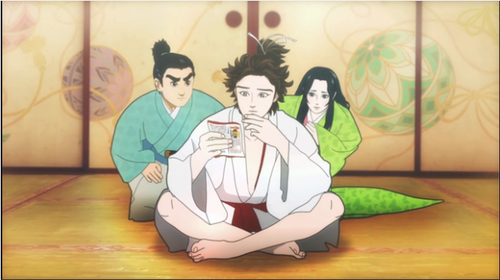
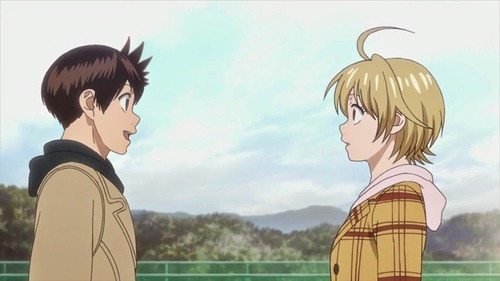
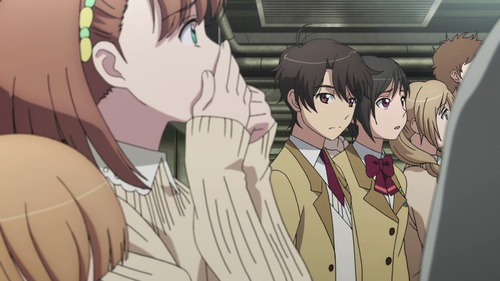
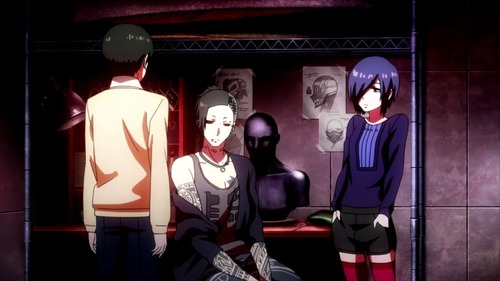
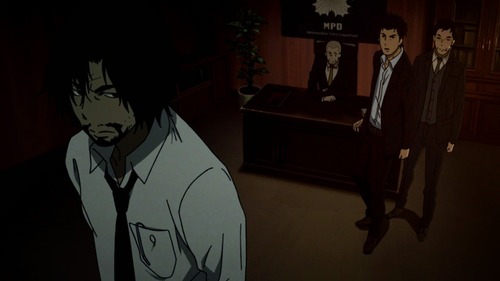
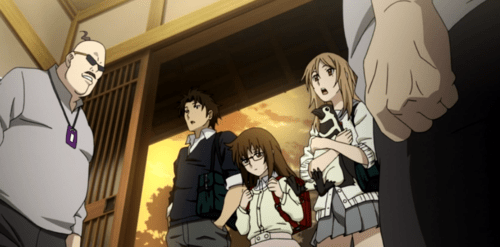





Published: Oct 11, 2014 02:30 pm